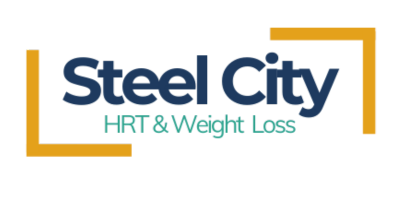
The 4 Faces of Estrogen: Uncovering the Truth!
The Mystery of Estrogen—More Than Just a “Woman’s Hormone”
If you’re over 30, you’ve probably felt it. The subtle shift in your energy, the creeping changes in your mood, the stubborn weight gain that won’t budge despite your best efforts. Maybe it’s brain fog. Maybe it’s dry skin. Maybe your libido isn’t what it used to be. If you’ve chalked it up to “just getting older,” you might be missing a key piece of the puzzle—estrogen.
But here’s the thing: estrogen isn’t just one hormone. It’s actually four different hormones—estrone (E1), estradiol (E2), estriol (E3), and estetrol (E4)—each with its own role, strengths, and risks. Understanding these differences can be the key to optimizing your hormones and feeling like yourself again.
Let’s break down the four faces of estrogen and how they impact your health, whether you’re navigating perimenopause, menopause, or simply looking to keep your hormones balanced.
Estrone (E1): The ‘Stored’ Estrogen—A Blessing and a Curse
What is Estrone (E1)?
Estrone (E1) is often called the “backup estrogen” because it’s the primary estrogen produced after menopause. Instead of being made in the ovaries, E1 is stored in fat cells and can be converted into the more potent estradiol (E2) when needed. Sounds great, right? Not so fast.
The Problem with Too Much Estrone
Here’s the downside—excess estrone is linked to an increased risk of breast and uterine cancers because it strongly activates estrogen receptor alpha (ERα), which stimulates cell growth. This is why postmenopausal women with more body fat often have higher estrogen levels, increasing their risk of hormone-sensitive cancers.
Who Benefits from Estrone?
✅ Postmenopausal women need some estrone as a reserve for estrogen production.
✅ It can be helpful for bone health to some degree.
❌ Obese individuals often have excess estrone, which can lead to estrogen dominance symptoms like weight gain, mood swings, and increased cancer risk.
💡 Pro Tip: If you’re postmenopausal and struggling with stubborn fat, irritability, or brain fog, you might have too much estrone and not enough estriol (E3) to counteract its effects. This is where bioidentical hormone therapy (BHRT) can help.
Estradiol (E2): The Powerhouse Estrogen—Friend or Foe?
What is Estradiol (E2)?
Estradiol (E2) is the most potent form of estrogen and the dominant one during a woman’s reproductive years. It’s responsible for regulating the menstrual cycle, supporting fertility, maintaining bone density, and keeping skin youthful. In men, small amounts of estradiol are essential for libido, mood, and cardiovascular health.
Estradiol’s Benefits and Risks
✅ Supports brain health—low levels are linked to memory loss and cognitive decline.
✅ Boosts metabolism—helps maintain muscle mass and reduces visceral fat.
✅ Protects the heart—lowers LDL (bad cholesterol) and increases HDL (good cholesterol).
❌ In excess, it can increase clotting risk—synthetic estradiol (like birth control pills) has been linked to an increased risk of strokes and blood clots.
❌ Can stimulate hormone-sensitive cancers—because it strongly activates ERα, high levels can increase breast and uterine cancer risk in some women.
💡 Pro Tip: If you’re experiencing severe menopause symptoms like night sweats, low libido, and depression, bioidentical estradiol (E2) replacement therapy may be the most effective option. Just make sure to balance it with progesterone to avoid unwanted side effects.
Estriol (E3): The Gentle Protector—Your Anti-Aging Ally
What is Estriol (E3)?
Estriol (E3) is the weakest of the estrogens, but don’t let that fool you—it plays a crucial role in protecting against estrogen dominance and promoting youthful skin and vaginal health. It’s produced in high amounts during pregnancy and has anti-inflammatory and protective benefits.
Estriol’s Benefits and Risks
✅ Supports vaginal and urinary health—helps with dryness, itching, and irritation.
✅ Anti-cancer properties—doesn’t overstimulate breast or uterine tissue.
✅ Improves skin elasticity—often used in anti-aging creams and topical hormone therapies.
❌ Weaker effects on bone density—not as effective as estradiol (E2) for osteoporosis prevention.
❌ Doesn’t fully relieve severe menopause symptoms—may not be enough on its own for hot flashes or severe mood swings.
💡 Pro Tip: If you want estrogen’s anti-aging benefits without the cancer risks, estriol (E3) might be your best option. It’s a key component of bioidentical hormone therapy (BHRT) and often used in topical creams for vaginal dryness and skin rejuvenation.
Estetrol (E4): The New Kid on the Block—A Game Changer for HRT?
What is Estetrol (E4)?
Estetrol (E4) is the least known estrogen because it’s primarily produced during pregnancy. However, new research suggests it may be the future of safer hormone therapy.
Why Estetrol is Exciting
✅ Safer for HRT—stimulates ERα less than E2, meaning a lower risk of stimulating cancer cell growth.
✅ May reduce clot risk—doesn’t activate clotting factors as strongly as synthetic estrogens.
✅ Promising for menopause relief—early research shows it can ease hot flashes and mood swings.
❌ Still under research—long-term effects aren’t fully understood yet.
❌ Limited availability—not widely used in HRT yet, but could be a game-changer in the coming years.
FAQs About Estrogen
Q: Which type of estrogen is best for menopause symptoms?
A: Estradiol (E2) is the most effective for managing hot flashes, night sweats, and mood swings. Estriol (E3) is better for vaginal health, while Estetrol (E4) shows promise as a safer alternative.
Q: Can men benefit from estrogen?
A: Yes! Men need small amounts of estradiol (E2) for heart, brain, and bone health. However, excess estrogen in men can lead to weight gain, mood swings, and gynecomastia (man boobs).
Q: What’s the safest form of estrogen for hormone therapy?
A: Bioidentical hormones (E3 and E4) are considered the safest, as they closely mimic your body’s natural hormones and have a lower cancer risk.
Conclusion: Which Estrogen is Right for You?
Not all estrogens are created equal. Whether you’re looking to ease menopause symptoms, maintain youthful skin, or optimize your hormone health, understanding the four types of estrogen can help you make the best decision for your body.
Want to know if bioidentical hormone therapy (BHRT) is right for you? Schedule a consultation with a hormone expert today and take control of your health!
Steel City HRT and Weight Loss is a clinic that provides safe and affordable hormone replacement therapy (HRT) and weight loss to men and women in Pueblo, Colorado. If you have any questions or would like to schedule an appointment to discuss treatment, don't hesitate to call, text, or email at [email protected] or (719) 669-4223.

